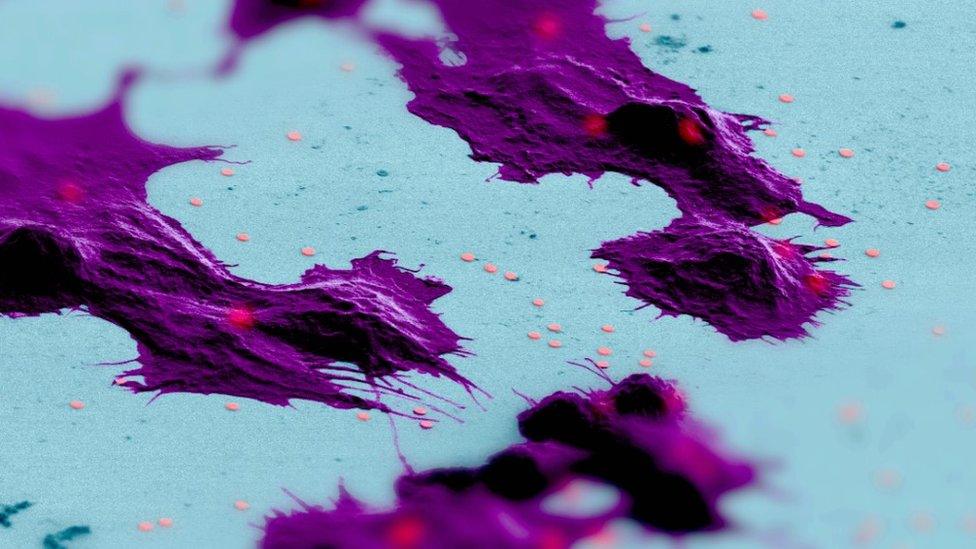Tiny lasers may help experts understand cancer
- Published

Electron microscopy image of cells (purple) that are in the process of internalising the new nano-lasers (red) developed by researchers at the University of St Andrews
Scientists in Fife are investigating if tiny lasers could be used to better understand diseases such as cancer.
Using nano-technology, the St Andrews University experts created lasers small enough to fit inside live cells, external which can then be tracked.
With a diameter of a thousandth of a millimetre, the lasers can be inserted into neurons or immune cells.
Once inside, they function as a beacon and can report back on the location of the cell and even the condition in it.
Currently, biologists use fluorescent dyes or proteins to track cell location but researchers said using the lasers was far more accurate.
Narrow obstacles
The team said the technology would allow them to follow individual cancer cells to understand when and how they become invasive.
Dr Andrea Di Falco, of St Andrews University's school of physics and astronomy, who co-supervised the project, said: "Our work is enabled by sophisticated nanotechnology.
"A new nanofabrication facility here in St Andrews allows us to produce lasers that are among the smallest known to date.
"These internalised sensors follow the cells as they feed, interact with their neighbours and move through narrow obstacles, without conditioning their behaviour."
PhD student Alasdair Fikouras and Royal Society Fellow Dr Marcel Schubert, who jointly tested the new lasers, said: "The new lasers can help us study so many urgent questions in completely different ways than before.
"We can now follow individual cancer cells to understand when and how they become invasive. It's biology on the single cell level that makes it so powerful."